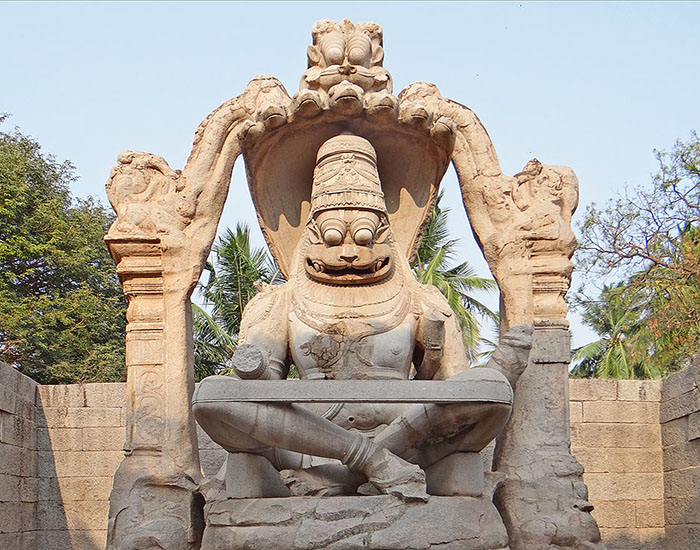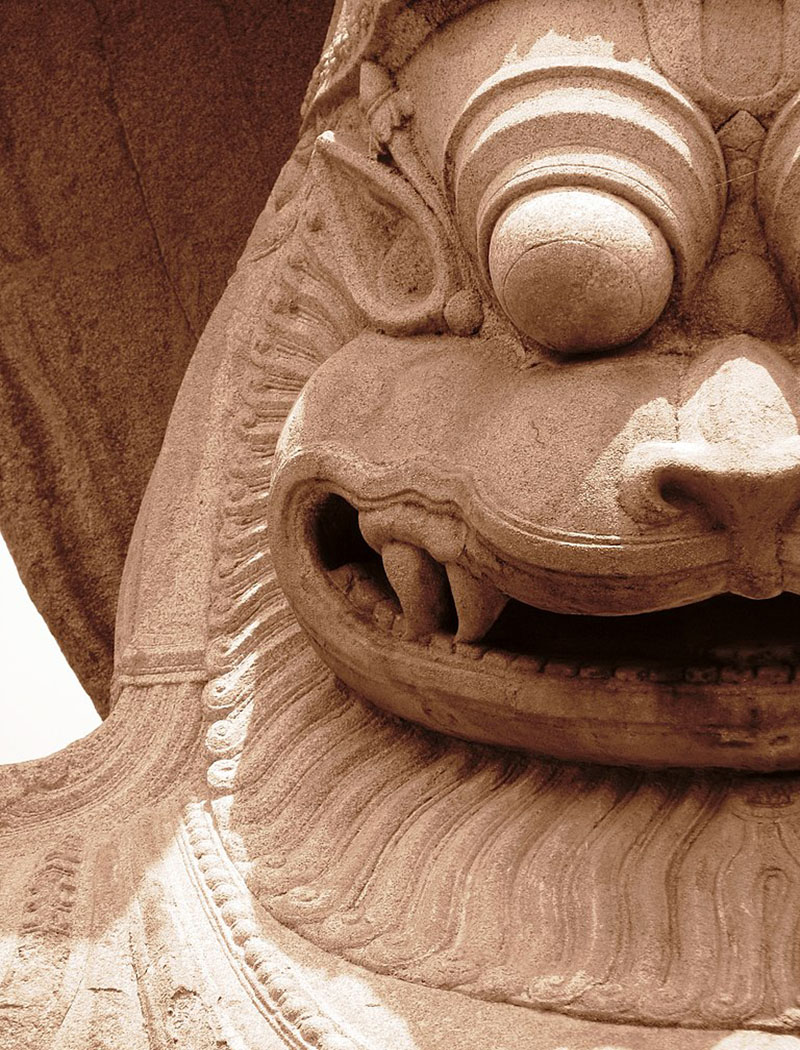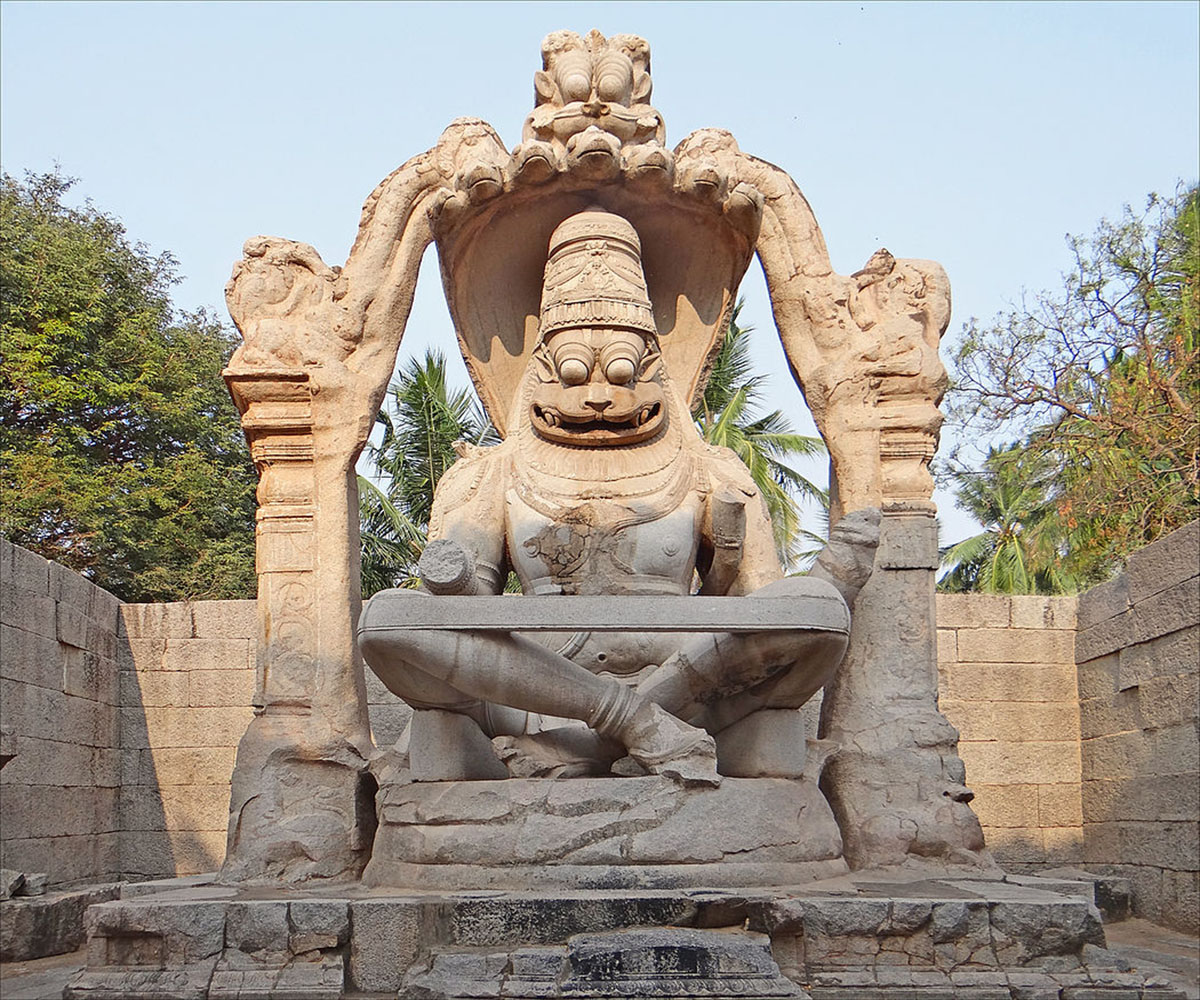Encyclopedia of Art > Articles
Ugra Narasimha Statue, Hampi

A large granite statue of Narasimha, the Ugra Narasimha statue was commissioned in 1528 CE by Krishnadevaraya, a ruler of the Tuluva Dynasty of Vijayanagara (present-day Hampi, Karnataka). At the time of its construction, and until its partial destruction in the aftermath of the battle of Talikota in 1565, the statue was a composite Lakshmi Narasimha statue. The accompanying Lakshmi image, once seated on the god’s knees, was destroyed in 1565.
The statue shows Narasimha seated in a frontal posture with bulging eyes and a gaping mouth. The god, 6.7 metres tall, is framed by a prabhavali arch with a kirtimukha (face of glory) at its top. Unlike most Narasimha images, here the god is depicted is seated atop three coils of the snake Adishesha, and is surmounted by its seven hoods. In this aspect, as with its original coupling with the image of Lakshmi, the statue shares iconographic attributes conventionally assigned to Vishnu. Behind the statue is a small shrine dedicated to Narasimha. The Narasimha statue’s colossal proportions and fearsome form suggest that it was considered a protecting image for the city.
Vijayanagara rulers of the Tuluva Dynasty were devotees of Narasimha; the god was one of the earliest Vaishnavite deities to be widely worshipped at Vijayanagara. Two early Vijayanagara temples were dedicated to him at Anegondi, and on the south bank of Tungabhadra. The Narasimha cult expanded under the rulers Krishnadevaraya and his successors Achyutaraya, and Sadashiva; it was given special impetus through the activities of the Madhava sect, who were active in and around Vijayanagara between the early fourteenth and early seventeenth centuries. Madhava Brahmins were also closely associated with the military administration of Krishnadevaraya.
The defeat of Vijayanagara by an alliance of the Deccan Sultanates in 1565 led to a sack of the city, during which the structure was also harmed. Both knees of Narasimha, and the Lakshmi image seated atop them, were broken off. This has commonly been interpreted as an act of iconoclasm by Muslim rulers, a view that has been questioned by recent scholarship. It has been pointed out that a monumental statue of Ganesha near the Narasimha statue was left untouched by the attacking armies, suggesting that the vandalism of the Narasimha statue was driven by its association with the power of the Tuluva Dynasty, rather than primarily by religious considerations. Such politically-driven acts of violence were commonplace in the sixteenth century: the rulers of Vijayanagara, especially Krishnadevaraya, are attested to have done so during campaigns in Odisha and the northern Deccan.
Restoration attempts in the 1980s brought the figure back to a cross-legged position by adding in a pair of knees. A yogapatta band was also added, strapping the knees together. This addition has often led the image to be described as Yoga Narasimha, as a result of which the restoration remains controversial.
As of writing, the Ugra Narasimha statue continues to feature in debates over religious and political violence in the sixteenth century and remains a major tourist attraction at Hampi.
First Published: April 21, 2022
Last Updated: July 27, 2023



